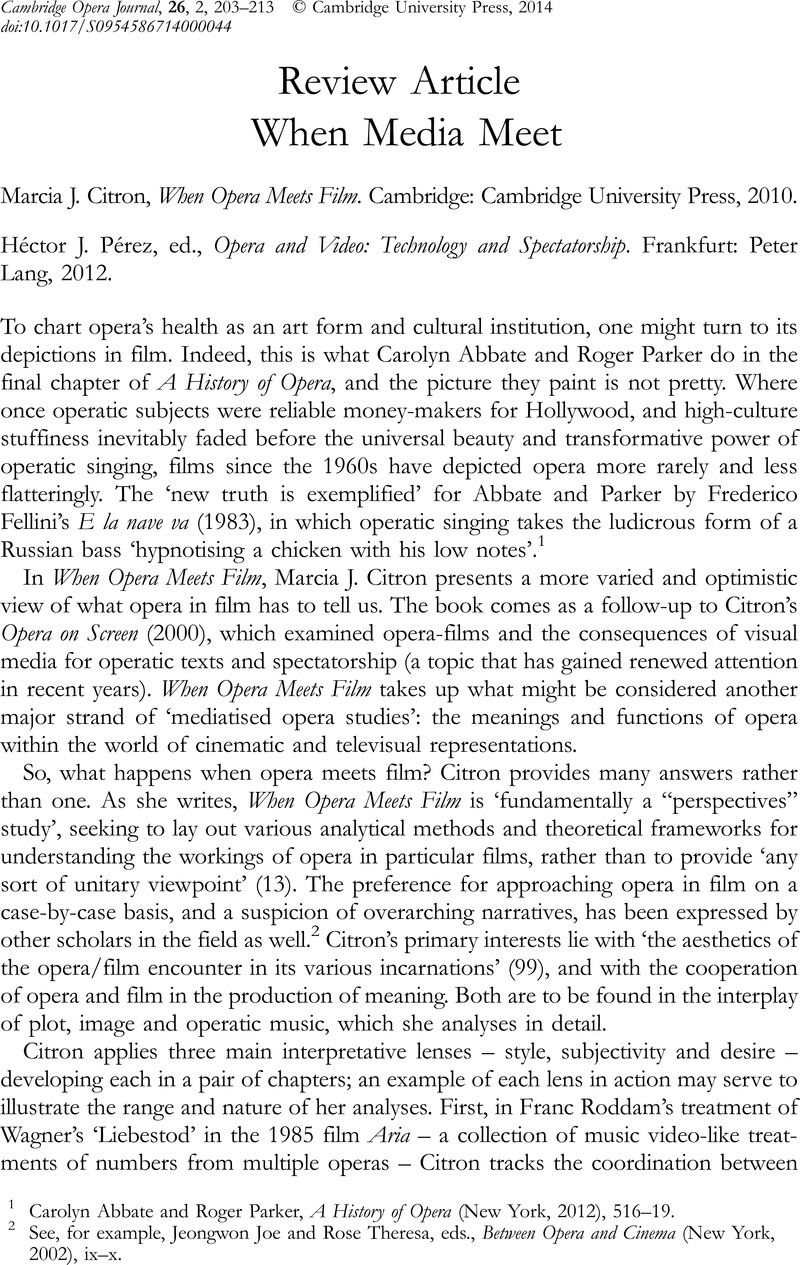Article contents
Abstract

- Type
- Review Article
- Information
- Copyright
- © Cambridge University Press 2014
References
1 Abbate, Carolyn and Parker, Roger, A History of Opera (New York, 2012), 516–519Google Scholar.
2 See, for example, Joe, Jeongwon and Theresa, Rose, eds., Between Opera and Cinema (New York, 2002), ix–xGoogle Scholar.
3 Rajewsky, Irina O., ‘Intermediality, Intertextuality, and Remediation: A Literary Perspective on Intermediality’, Intermédialités 6 (2005), 44Google Scholar.
4 Citron also mentions Italian studies scholar Bernhard Kuhn, who draws on theories of intermediality developed by Wolf and Rajewsky (in ways different from Citron) in Die Oper im italienischen Film (Essen, 2005), and articles including ‘The film-opera Aida (1953): intermediality and operatics’, Journal of Adaptation in Film & Performance 2 (2009), 19–33.
5 Wolf relies heavily on Neubauer’s, JohnThe Emancipation of Music from Language (New Haven, 1986)Google Scholar for his historical account of the relation between music and words.
6 Neumeyer, David, ‘The Resonance of Wagnerian Opera and Nineteenth-Century Melodrama in the Film Scores of Max Steiner,’ Wagner and Cinema, ed. Jeongwon Joe and Sander Gilman (Bloomington, 2010), 114–115Google Scholar.
7 Bolter, Jay David, ‘Transference and Transparency: Digital Technology and the Remediation of Cinema’, Intermédialités 6 (2005), 13–14CrossRefGoogle Scholar.
8 Grover-Friedlander, Michal, Vocal Apparitions: The Attraction of Cinema to Opera (Princeton, 2005), 1CrossRefGoogle Scholar.
9 Grover-Friedlander, , Vocal Apparitions, 2Google Scholar.
10 Pool, Ithiel de Sola, Technologies of Freedom (1983)Google Scholar, cited by Jenkins, Henry, Convergence Culture: Where Old and New Media Collide (New York, 2006), 10Google Scholar.
11 Jenkins, , Convergence Culture, 16Google Scholar.
12 Rosand, Ellen, Opera in Seventeenth-Century Venice: The Creation of a Genre (Berkeley, 1991), 95Google Scholar.
- 1
- Cited by


